Are you dreaming of exploring the vibrant culture and stunning landscapes of Cuba? If you’re an American citizen wondering How To Travel To Cuba From The United States, SIXT.VN is here to guide you through every step. Discover the legal pathways, essential travel tips, and how SIXT.VN can make your Cuban adventure seamless. Let’s turn your Cuban dreams into reality.
1. Can Americans Travel to Cuba in 2024?
Yes, Americans can absolutely travel to Cuba in 2024. While there have been restrictions in the past, several legal avenues allow U.S. citizens to experience the beauty and culture of Cuba. Navigating these regulations can seem daunting, but with the right information and planning, your trip can be both enriching and compliant.
1.1 Understanding the Legal Framework
The U.S. government, through the Office of Foreign Assets Control (OFAC), requires Americans traveling to Cuba to do so under a general license for authorized travel. According to the U.S. Department of the Treasury, these licenses cover activities that align with U.S. foreign policy objectives, such as supporting the Cuban people and promoting human rights.
1.2 The “Support for the Cuban People” License
One of the most accessible categories for individual travelers is the “Support for the Cuban People” license. This requires travelers to engage in activities that directly benefit the Cuban people, such as staying in private accommodations (casas particulares), eating at privately-owned restaurants (paladares), and using independent transportation services.
1.3 COVID-19 and Travel Requirements (Updated)
Good news for travelers! As of April 2024, Cuba has lifted all COVID-related entry requirements. You no longer need to present a negative test or proof of vaccination to enter the country. According to the U.S. Embassy in Cuba, these changes align with global trends in easing travel restrictions.
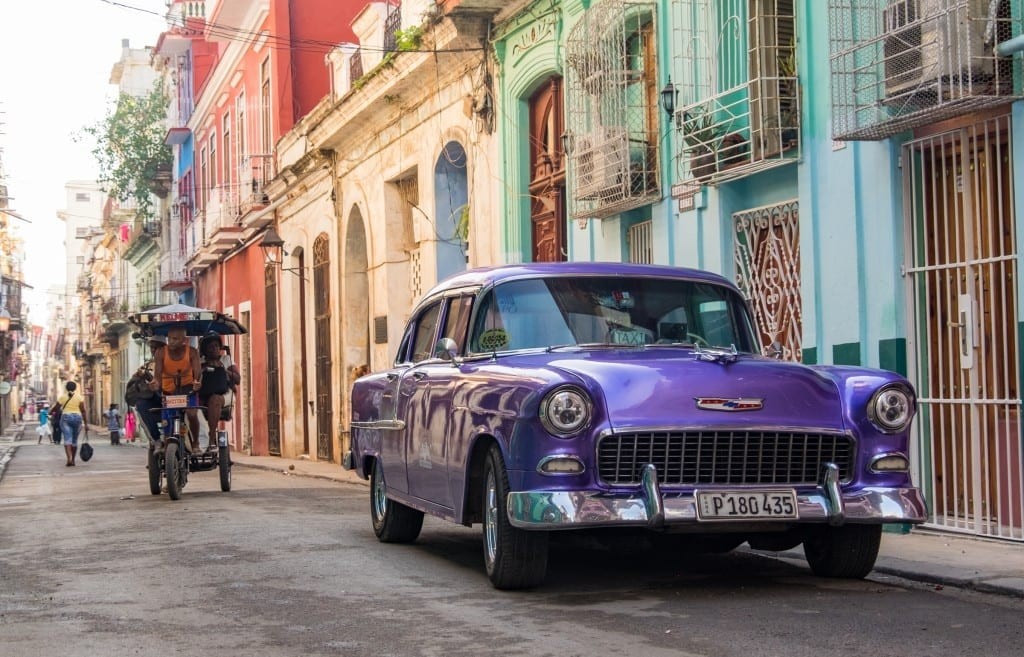 Colorful street in Havana, Cuba, showcasing classic cars and colonial architecture
Colorful street in Havana, Cuba, showcasing classic cars and colonial architecture
2. What are the Authorized Categories for Travel to Cuba?
The U.S. government outlines specific categories under which Americans can legally travel to Cuba. These categories are designed to ensure that travel activities align with U.S. foreign policy objectives. Here are the primary authorized categories:
| Category | Description |
|---|---|
| Family Visits | Travel for the purpose of visiting close relatives residing in Cuba. |
| U.S. Government Official Business | Official travel by U.S. government employees, foreign government officials, and representatives of certain intergovernmental organizations. |
| Journalistic Activity | Travel for journalists engaged in news reporting or gathering activities. |
| Professional Research and Meetings | Travel for professional research, including attending conferences and meetings related to one’s profession. |
| Educational Activities | Travel for participation in educational programs, including study abroad programs and academic research. |
| Religious Activities | Travel for religious purposes, such as attending religious events or conducting religious activities. |
| Public Performances and Competitions | Travel for participation in public performances, clinics, workshops, athletic competitions, and exhibitions. |
| Support for the Cuban People | Travel involving activities that directly support the Cuban people, such as staying in private homes, eating at private restaurants, and engaging with local entrepreneurs. |
| Humanitarian Projects | Travel for humanitarian projects, including providing assistance to individuals or organizations in need. |
| Activities of Private Foundations or Institutes | Travel for activities of private foundations or research and educational institutes with an established interest in international relations. |
| Exportation, Importation, or Transmission | Travel related to the exportation, importation, or transmission of information or informational materials. |
| Certain Export Transactions | Travel related to export transactions that may be considered for authorization under existing Department of Commerce regulations and guidelines with respect to Cuba or engaged in by U.S.-owned foreign firms. |
Understanding these categories will help you determine the most suitable option for your travel purpose and ensure compliance with U.S. regulations.
2.1 Detailed Overview of Authorized Categories
To legally travel to Cuba from the United States, it’s essential to understand the authorized categories set by the U.S. government. According to the U.S. Department of Treasury, these categories outline the permitted reasons for travel. Choosing the right category is the first step in planning your trip.
2.2 The “Support for the Cuban People” Category
This category is one of the most popular for tourists. It requires you to engage in activities that directly support the Cuban people, such as staying in private homes (casas particulares), eating at local restaurants (paladares), and using local transportation. According to OFAC regulations, these activities should enhance contact with the Cuban people, support civil society in Cuba, or promote independent activity intended to strengthen civil society.
2.3 Educational and Professional Activities
If you’re traveling for educational or professional purposes, you may qualify under the “Educational Activities” or “Professional Research and Professional Meetings” categories. These require specific documentation and adherence to a detailed itinerary.
3. How to Get a Cuban Visa for Americans?
Obtaining a Cuban visa, also known as a tourist card, is a crucial step for American travelers. Here’s a detailed guide on how to acquire one:
3.1 Applying for a Visa in Advance
One way to secure your visa is by applying in advance through a Cuban embassy or consulate. According to the Cuban Embassy in Washington D.C., you’ll need to provide your passport, travel itinerary, and payment for the visa fee.
3.2 Purchasing a Tourist Card Through Airlines
Another convenient option is to purchase a tourist card through the airline you’re flying with. Many airlines that operate flights to Cuba, such as American Airlines and JetBlue, offer this service. You can typically purchase the tourist card at the airport before boarding your flight.
3.3 The Pink vs. Green Tourist Card
It’s important to note the distinction between the pink and green tourist cards. If you’re flying directly from the United States, you’ll need the pink tourist card. If you’re flying from another country, such as Mexico or Canada, you’ll need the green tourist card.
3.4 Obtaining a Visa Through Travel Agencies
Some travel agencies, like SIXT.VN, specialize in arranging travel to Cuba and can assist with obtaining your visa. This can be a convenient option if you prefer a hassle-free experience. SIXT.VN can guide you through the process and ensure you have the correct documentation for your trip.
3.5 Cost of a Cuban Visa
The cost of a Cuban visa can vary depending on where you purchase it. Generally, you can expect to pay between $50 and $100 USD. Airlines often charge a higher fee for the convenience of purchasing it at the airport.
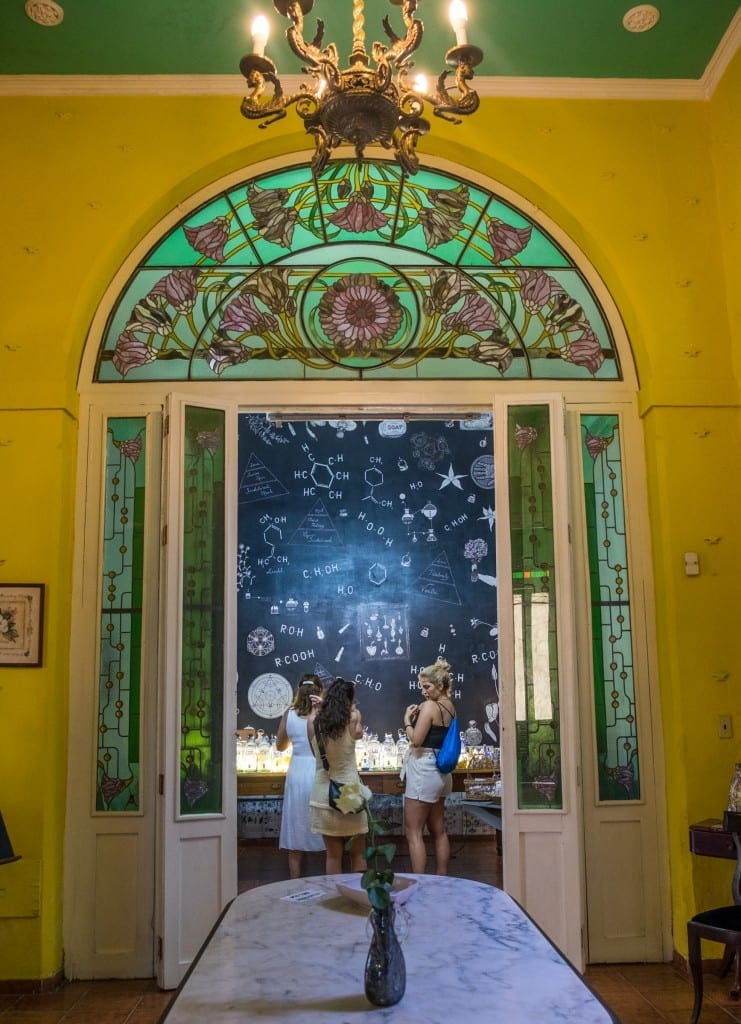 Close-up of a Cuban visa, highlighting its key details and security features
Close-up of a Cuban visa, highlighting its key details and security features
4. Flights to Cuba from the United States
Direct flights to Cuba from the United States are available from several major cities, making travel more convenient than ever. Here’s what you need to know about flying to Cuba:
4.1 Airlines Offering Direct Flights
Several airlines offer direct flights to Havana and other Cuban cities from the United States. These include American Airlines, JetBlue, and United Airlines. According to flight data, Miami, New York, and Fort Lauderdale are the most common departure cities.
4.2 Booking Your Flight
When booking your flight, it’s important to ensure that the airline is aware that you’re traveling under a general license. You may need to provide documentation to support your authorized travel category.
4.3 Flying Via Third Countries
Alternatively, you can fly to Cuba via a third country, such as Mexico or Canada. This option may be cheaper, but it requires additional travel time and planning. According to flight comparison sites, flying via Mexico City or Cancun can sometimes offer significant savings.
4.4 Airport Considerations
When flying from the U.S., you’ll typically depart from a major international airport like Miami International Airport (MIA) or John F. Kennedy International Airport (JFK). Arriving in Cuba, you’ll likely land at José Martí International Airport (HAV) in Havana.
4.5 Finding Cheap Flights
To find the best deals on flights to Cuba, consider using flight comparison websites like Skyscanner or Google Flights. These sites allow you to compare prices from multiple airlines and find the most affordable options.
5. What About Money and Currency in Cuba?
Managing your finances in Cuba requires careful planning, as American credit and debit cards are not widely accepted. Here’s what you need to know:
5.1 Cash is King
The most important thing to remember is to bring enough cash to cover your entire trip. U.S.-issued credit and debit cards generally do not work in Cuba due to the U.S. embargo. As of 2024, this remains a significant consideration for American travelers.
5.2 Currency Exchange
You can exchange U.S. dollars or Euros for Cuban pesos (CUP) at official exchange houses (CADECA) or banks. According to recent traveler reports, the exchange rates at CADECA are generally more favorable than those at the airport.
5.3 Avoiding U.S. Financial Institutions
It’s crucial to avoid using U.S. financial institutions while in Cuba. Accessing your online banking or using services like PayPal can result in your accounts being frozen. This is due to U.S. regulations that prohibit financial transactions with Cuba.
5.4 Budgeting for Your Trip
Budgeting for your trip to Cuba depends on your travel style and preferences. On average, you can expect to spend between $50 and $150 USD per day, including accommodation, food, and activities. However, this can vary widely depending on your choices.
5.5 Hidden Costs to Consider
Be sure to factor in potential hidden costs, such as tips, souvenirs, and unexpected expenses. It’s always a good idea to have a buffer in your budget to cover any unforeseen circumstances.
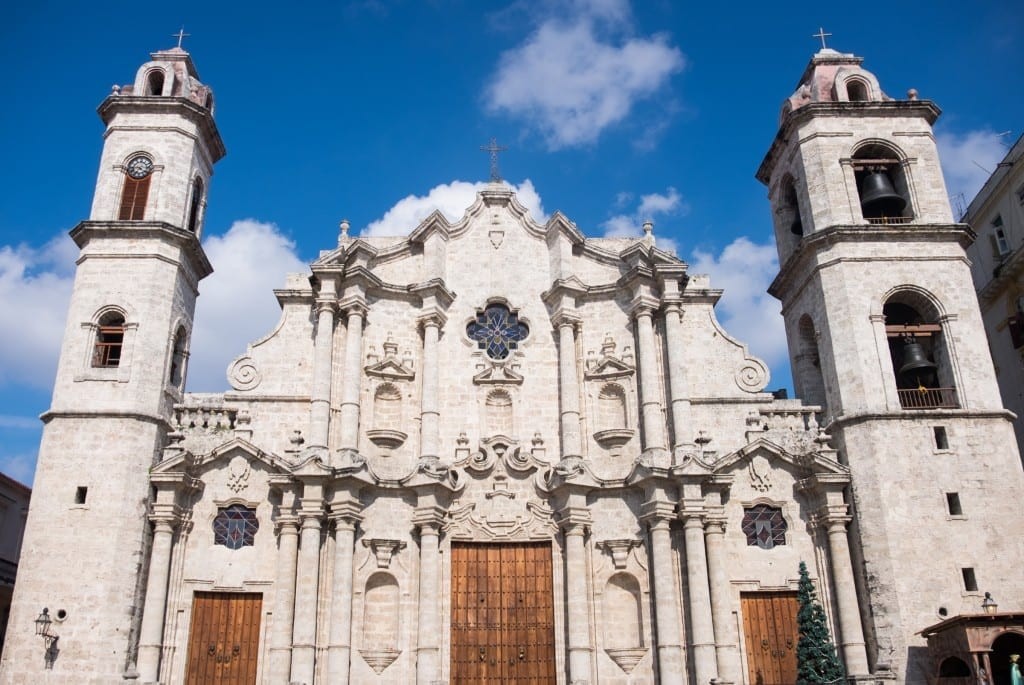 Close-up of Cuban currency, highlighting its unique design and denominations
Close-up of Cuban currency, highlighting its unique design and denominations
6. Accommodations in Cuba for American Travelers
When planning your stay in Cuba, consider these accommodation options that align with the “Support for the Cuban People” travel category:
6.1 Casas Particulares (Private Homes)
Staying in casas particulares is a fantastic way to support local families and experience authentic Cuban hospitality. According to Airbnb, there are thousands of casas particulares available in Cuba, offering a range of amenities and prices.
6.2 Hotels on the Restricted List
Be cautious when booking hotels, as some government-owned establishments are on the U.S. State Department’s restricted list. Americans are prohibited from spending money at these establishments. Always check the list before making a reservation.
6.3 Booking Through Airbnb
Airbnb is a popular platform for finding casas particulares in Cuba. It allows you to browse listings, read reviews, and book your accommodation securely. Be sure to communicate with your host in advance to confirm your arrival details.
6.4 Hostels and Guesthouses
In addition to casas particulares, hostels and guesthouses are also available in Cuba. These can be a more budget-friendly option for solo travelers or those on a tight budget. However, be sure to research the establishment thoroughly before booking.
6.5 Location Considerations
Consider the location of your accommodation when planning your trip. Havana offers a range of neighborhoods to choose from, including Old Havana (Habana Vieja), Vedado, and Miramar. Each neighborhood has its own unique charm and attractions.
7. Internet and Connectivity in Cuba
Staying connected in Cuba can be challenging, but with some planning, you can manage your internet needs. Here’s what you need to know:
7.1 Wi-Fi Hotspots
Wi-Fi is available in Cuba, but it’s not as widespread as in other countries. You’ll typically find Wi-Fi hotspots in parks, hotels, and internet cafes. These hotspots require you to purchase a Wi-Fi card from ETECSA, the state-owned telecommunications company.
7.2 ETECSA Wi-Fi Cards
ETECSA Wi-Fi cards come in various denominations, typically offering one or five hours of internet access. You can purchase these cards at ETECSA stores or from resellers. Be prepared to show your passport when purchasing a card.
7.3 Using VPNs
Using a Virtual Private Network (VPN) can help you bypass internet restrictions and protect your online privacy in Cuba. Several VPN providers offer servers in Cuba, allowing you to access blocked websites and services.
7.4 Mobile Data
Mobile data is available in Cuba, but it can be expensive and unreliable. If you plan to use mobile data, you’ll need to purchase a Cubacel SIM card from ETECSA. Be aware that data speeds can be slow and coverage may be limited.
7.5 Staying Safe Online
When using public Wi-Fi networks in Cuba, it’s important to take precautions to protect your personal information. Avoid accessing sensitive websites, such as banking or email accounts, and use a strong password.
 People gathered around a Wi-Fi hotspot in Cuba, using their phones and tablets
People gathered around a Wi-Fi hotspot in Cuba, using their phones and tablets
8. What To Do and See in Cuba?
Cuba offers a wealth of cultural and historical attractions, as well as stunning natural landscapes. Here are some must-see destinations:
8.1 Havana: A City of Timeless Charm
Havana, the capital of Cuba, is a vibrant city filled with colorful colonial architecture, classic cars, and lively music. Explore Old Havana (Habana Vieja), a UNESCO World Heritage site, and visit iconic landmarks like the Plaza de la Revolución and the Malecón.
8.2 Viñales Valley: Natural Beauty and Tobacco Farms
Viñales Valley is a picturesque region known for its stunning limestone hills (mogotes) and lush tobacco farms. Take a tour of a tobacco farm, learn about the cigar-making process, and enjoy the breathtaking scenery.
8.3 Trinidad: A Colonial Gem
Trinidad is a well-preserved colonial town that offers a glimpse into Cuba’s past. Wander through its cobblestone streets, admire the colorful architecture, and visit the Plaza Mayor, the heart of the town.
8.4 Varadero: Pristine Beaches
Varadero is a popular beach resort town known for its pristine white-sand beaches and crystal-clear waters. Relax on the beach, swim in the ocean, and enjoy water sports like snorkeling and scuba diving.
8.5 Santiago de Cuba: A Cultural Hotspot
Santiago de Cuba is a vibrant city with a rich cultural heritage. Visit the Castillo del Morro, a UNESCO World Heritage site, and explore the historic city center. Don’t miss the opportunity to experience the city’s lively music and dance scene.
9. How to Support the Cuban People?
One of the key requirements for Americans traveling to Cuba is to engage in activities that support the Cuban people. Here are some ways to do so:
9.1 Stay in Casas Particulares
By staying in casas particulares, you’re directly supporting local families and contributing to the Cuban economy. According to recent data, casas particulares generate significant income for Cuban families.
9.2 Eat at Paladares (Private Restaurants)
Paladares are privately-owned restaurants that offer authentic Cuban cuisine. By dining at paladares, you’re supporting local entrepreneurs and enjoying delicious meals.
9.3 Use Local Transportation
Using local transportation, such as taxis and buses, helps support Cuban drivers and transportation workers. Be sure to negotiate the fare in advance to avoid any misunderstandings.
9.4 Buy Souvenirs from Local Artisans
When shopping for souvenirs, look for items made by local artisans. This helps support Cuban artists and craftspeople and ensures that your money stays in the local economy.
9.5 Take Tours with Local Guides
Taking tours with local guides is a great way to learn about Cuban culture and history while supporting local tour operators. Be sure to choose guides who are licensed and reputable.
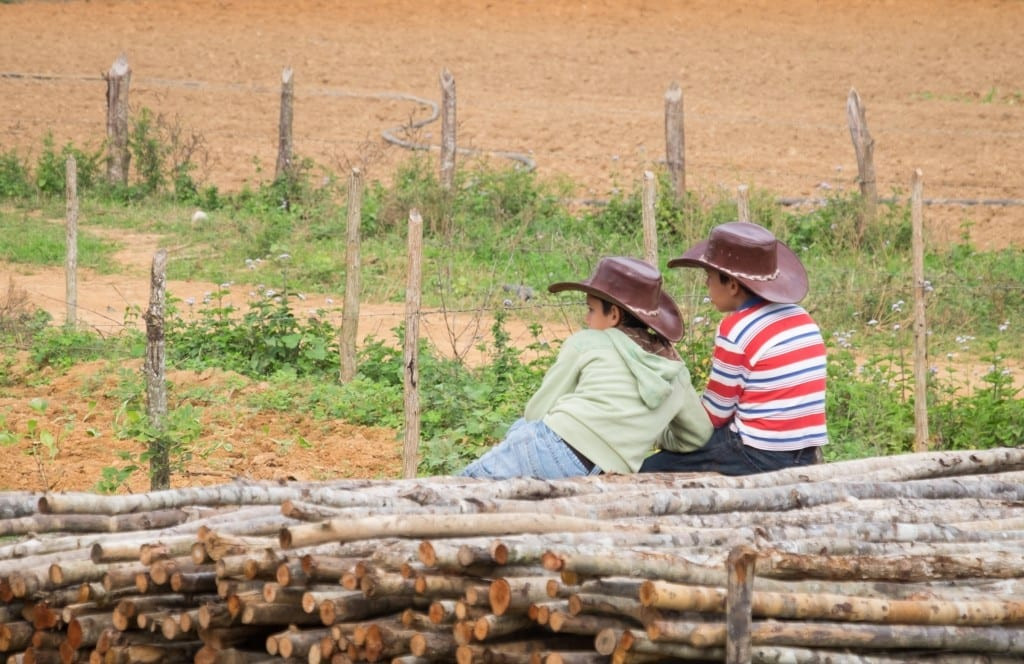 Local Cuban artisan selling handmade crafts in a street market
Local Cuban artisan selling handmade crafts in a street market
10. What to Know About Cuban Culture and Customs?
To make the most of your trip to Cuba, it’s important to be aware of Cuban culture and customs. Here are some tips to help you navigate Cuban society:
10.1 Greetings and Etiquette
Cubans are generally warm and friendly people. When greeting someone, it’s customary to shake hands. Close friends and family members may also exchange a kiss on the cheek.
10.2 Tipping
Tipping is customary in Cuba, especially in the tourism industry. It’s common to tip waiters, taxi drivers, and tour guides. A standard tip is around 10-15% of the total bill.
10.3 Dress Code
There is no strict dress code in Cuba, but it’s advisable to dress modestly, especially when visiting religious sites. Lightweight, breathable clothing is recommended due to the warm climate.
10.4 Music and Dance
Music and dance are integral parts of Cuban culture. Don’t miss the opportunity to experience live music and dance performances. You may even be invited to join in the fun!
10.5 Language
The official language of Cuba is Spanish. While some Cubans may speak English, it’s helpful to learn some basic Spanish phrases to communicate with locals.
11. Essential Travel Tips for Cuba
Planning a trip to Cuba requires careful consideration of various factors. Here are some essential travel tips to ensure a smooth and enjoyable experience:
11.1 Travel Insurance is a Must
Travel insurance is required to enter Cuba. Be sure to purchase a policy that covers medical expenses, trip cancellations, and other unforeseen events. According to travel insurance providers, it’s important to verify that your policy is valid in Cuba.
11.2 Pack Appropriately
Pack lightweight, breathable clothing, comfortable shoes, and sunscreen. Don’t forget to bring insect repellent, as mosquitoes can be prevalent in some areas. A hat and sunglasses are also recommended to protect yourself from the sun.
11.3 Learn Basic Spanish
While some Cubans may speak English, knowing some basic Spanish phrases can greatly enhance your travel experience. Consider downloading a translation app or carrying a phrasebook.
11.4 Stay Hydrated
It’s important to stay hydrated in Cuba’s warm climate. Carry a reusable water bottle and refill it whenever possible. Bottled water is readily available for purchase.
11.5 Be Prepared for Power Outages
Power outages are common in Cuba. Be prepared for occasional blackouts by bringing a flashlight or headlamp. It’s also a good idea to charge your electronic devices whenever possible.
12. What are the Potential Challenges When Traveling to Cuba?
While Cuba offers a unique and rewarding travel experience, it’s important to be aware of potential challenges:
12.1 Limited Access to Goods and Services
Due to economic constraints, Cuba may have limited access to certain goods and services. Be prepared for shortages of some items, such as toiletries and medications.
12.2 Bureaucracy and Red Tape
Navigating Cuban bureaucracy can be challenging. Be patient and persistent when dealing with government officials and be prepared for delays.
12.3 Transportation Issues
Transportation in Cuba can be unreliable. Buses may be crowded and delayed, and taxis may be difficult to find. Plan your transportation in advance and be prepared for potential disruptions.
12.4 Food Quality
While Cuban cuisine can be delicious, the quality of food can vary. Be cautious when eating at unfamiliar establishments and avoid consuming tap water.
12.5 Harassment by Hustlers
Be aware of hustlers who may try to take advantage of tourists. Be firm and assertive when declining their services and avoid engaging in conversations with strangers.
13. How Can SIXT.VN Help You Travel to Cuba?
SIXT.VN offers a range of services to help you plan and book your trip to Cuba:
13.1 Personalized Travel Itineraries
SIXT.VN can create personalized travel itineraries tailored to your interests and budget. We’ll help you choose the best destinations, activities, and accommodations for your trip.
13.2 Visa Assistance
SIXT.VN can assist you with obtaining your Cuban visa. We’ll guide you through the application process and ensure you have the correct documentation.
13.3 Accommodation Booking
SIXT.VN can help you book accommodations that comply with U.S. regulations. We’ll ensure that you stay in casas particulares or hotels that are not on the restricted list.
13.4 Transportation Arrangements
SIXT.VN can arrange transportation within Cuba, including airport transfers, taxis, and rental cars. We’ll ensure that you use local transportation services to support the Cuban people.
13.5 Tour and Activity Booking
SIXT.VN can help you book tours and activities that align with the “Support for the Cuban People” travel category. We’ll ensure that you engage in activities that directly benefit the Cuban people.
Address: 260 Cau Giay, Hanoi, Vietnam
Hotline/Whatsapp: +84 986 244 358
Website: SIXT.VN
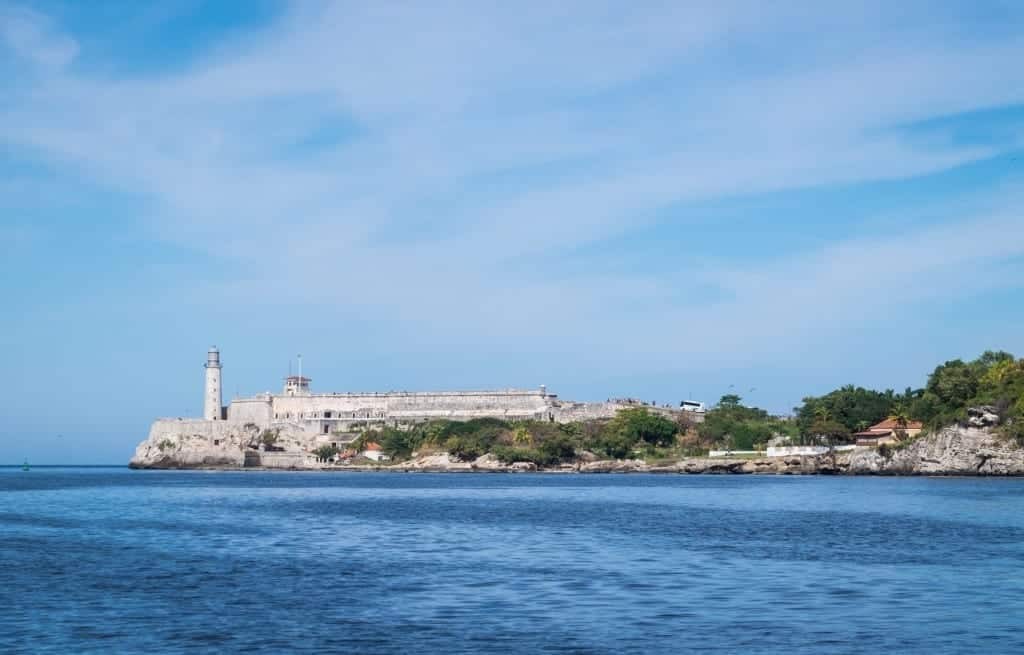 SIXT.VN logo, promoting its travel services to Cuba
SIXT.VN logo, promoting its travel services to Cuba
14. Frequently Asked Questions About Traveling to Cuba
Here are some frequently asked questions about traveling to Cuba:
14.1 Is it safe for Americans to travel to Cuba?
Yes, Cuba is generally considered safe for American travelers. However, it’s important to be aware of your surroundings and take precautions to protect yourself from theft and scams.
14.2 Can I use my credit card in Cuba?
No, U.S.-issued credit cards generally do not work in Cuba. Be sure to bring enough cash to cover your entire trip.
14.3 What is the best time to visit Cuba?
The best time to visit Cuba is during the dry season, which runs from November to April. The weather is mild and sunny, making it ideal for outdoor activities.
14.4 What should I pack for my trip to Cuba?
Pack lightweight, breathable clothing, comfortable shoes, sunscreen, insect repellent, and a hat. Don’t forget to bring a reusable water bottle and a flashlight.
14.5 How can I stay connected to the internet in Cuba?
Wi-Fi is available in Cuba, but it’s not as widespread as in other countries. You’ll typically find Wi-Fi hotspots in parks, hotels, and internet cafes. Be sure to purchase a Wi-Fi card from ETECSA.
14.6 What are some cultural etiquette tips for traveling to Cuba?
Be respectful of Cuban culture and customs. Dress modestly, especially when visiting religious sites. Greet people with a handshake and tip appropriately.
14.7 What are some popular attractions to visit in Cuba?
Popular attractions include Old Havana, Viñales Valley, Trinidad, and Varadero. Be sure to explore the local culture and history of each destination.
14.8 How can I support the Cuban people during my trip?
Stay in casas particulares, eat at paladares, use local transportation, and buy souvenirs from local artisans. Engage in activities that directly benefit the Cuban people.
14.9 What are some potential challenges to be aware of when traveling to Cuba?
Potential challenges include limited access to goods and services, bureaucracy, transportation issues, and harassment by hustlers. Be prepared and stay vigilant.
14.10 Is travel insurance required for Cuba?
Yes, travel insurance is required to enter Cuba. Be sure to purchase a policy that covers medical expenses, trip cancellations, and other unforeseen events.
15. Conclusion: Your Cuban Adventure Awaits!
Traveling to Cuba from the United States is possible with the right planning and preparation. By understanding the legal requirements, obtaining the necessary visa, and engaging in activities that support the Cuban people, you can have a rewarding and enriching travel experience. Let SIXT.VN be your trusted partner in planning your Cuban adventure. Contact us today to start your journey!



